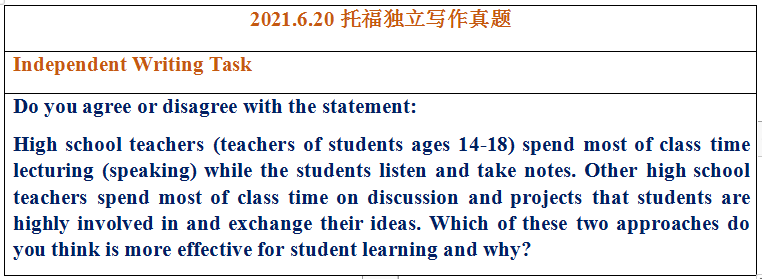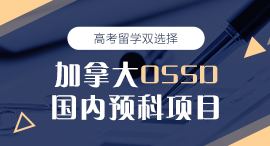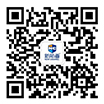20210620托福独立写作范文-托福写作-王雨婷

With distinct individual differences, teachers carry out their teaching in multiple dissimilar approaches and with their personal characteristics. Some teachers prefer a teacher-centered teaching mode, during which process the students are only required to listen and take notes, while other teachers adopt a totally different teaching method, a more active one in which students are highly involved in and exchange ideas. I, personally speaking, am more in favor of the student-oriented teaching pedagogy.
First, there is students’ active participation to take into consideration. Students’ attitude toward teaching, positive or negative, is the most decisive motivator in students absorption in knowledge. Imagine that an English teacher is having a class about argument writing. While she keeps lecturing and pouring her insight and ideas into the mind of her students, what will the students’ reaction be? They will either refuse to accept the teacher’s teaching content for they might actually hold the opposite opinion, or lose attention and have their mind on or even chat over things irrelevant to teaching content. Were the students involved more in the classroom activities and encouraged to express their personal opinions, the students could absorb much more than that in the reverse occasion.
Second, only with sufficient involvement and exchange of ideas, can students develop independent thinking during the class. In the teacher-centered teaching mode, passive learning is commonly seen, where students simply sit back and take in information. Active thinking seldom happens during the process. On the contrary, the student-centered teaching approach provides an free atmosphere where students are challenged to think so as to successfully interact with other classmates and express their personal opinions. The ability to think on one’s own is critical for the development of the student later on from academic learning to future career. For instance, they should weigh over the questions on examination paper independently, and should finish individual tasks and their own way to resolve difficulties in work. Thus, the independent thinking ability cultivated during this forms of teaching process is conducive to student’s future success.
Some may argue that in the teacher-centered classroom, the efficiency of delivering knowledge, the core element of a class, is much higher. However, the key point lies in whether students can fully absorb such a large amount of information output. No, in most cases. Actually, the ratio of a student’s knowledge take-in depends more on their willingness to learn, instead of how much is presented in one lesson. However, being asked to simply listen and take note helps little in improving desire to learn, even does harm to it.
To conclude, I am more a big fan of a teaching mode in which students are involved in discussion and other classroom participation, rather than a teacher-centered one.
托福写作课程中心
查看欧洲杯押注软件下载_欧洲杯押注平台: >托福快讯
- 你辛苦了” 英文怎么说?... 2019-04-15
- 大神有话说 | 托福112, ... 2019-01-05
- 留学故事:我的北美历险记 2018-10-08
- “好主意”不要再说烂大街... 2018-08-22
- 六级500分,能考托福多少分? 2018-06-21



